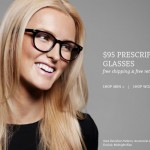 Major events of 1969 include the inauguration of Richard Nixon, the moon landing, and Woodstock. It was a time of profound change and cultural transformation.
Major events of 1969 include the inauguration of Richard Nixon, the moon landing, and Woodstock. It was a time of profound change and cultural transformation.
Quick. What was the most popular song in 1969? Surely something by the Beatles, who released Abbey Road that year, or at least the Rolling Stones, right?
Nope. It was “Sugar, Sugar” by the Archies.
The Beatles barely cracked the top 25, with “Get Back” (#25). The Rolling Stones did better, with “Honky Tonk Women” (#4). But in 1969, two groups enjoyed the distinction of having two songs each in the top dozen songs of the year: Sly and the Family Stone and Tommy James and the Shondells.
In a recent blog post, the brilliant, inimitable Seth Godin discusses the downside of popularity, noting that “in general, the search for popular is wildly overrated, because it corrupts our work, eats away at our art and makes it likely we’ll compromise to please the anonymous masses.”
In your products, services and communications, what are you doing to be popular?
Marketing gurus will give you all kinds of logical, linear, left-brain ways to measure, categorize, understand and increase your popularity. Tap into the marketing blogosphere, and you’ll be assaulted with a dizzying array of tips ‘n tricks to increase and accelerate your popularity.
What are you doing to create amazement and delight? This is where the right brain comes in. It’s your greatest resource for finding the aha! the points of connection and wonder. The things that will touch hearts and buckle knees.
And yes, as Godin suggests, it will take courage to forgo popularity and embrace originality.
But when was the last time you listened to Tommy Roe (#6), the Foundations (#9) or, indeed, the #1 Archies?






 Given the high cost and the huge opportunity, why do marketers use such a limited range of music? Spend an evening or two listening to the music in ads and you’re unlikely to hear anything beyond contemporary (rock, hip hop, rap, country, maybe a little jazz) and oldies. This includes music used in its original or adapted form as well as music written specifically for commercials.
Given the high cost and the huge opportunity, why do marketers use such a limited range of music? Spend an evening or two listening to the music in ads and you’re unlikely to hear anything beyond contemporary (rock, hip hop, rap, country, maybe a little jazz) and oldies. This includes music used in its original or adapted form as well as music written specifically for commercials.